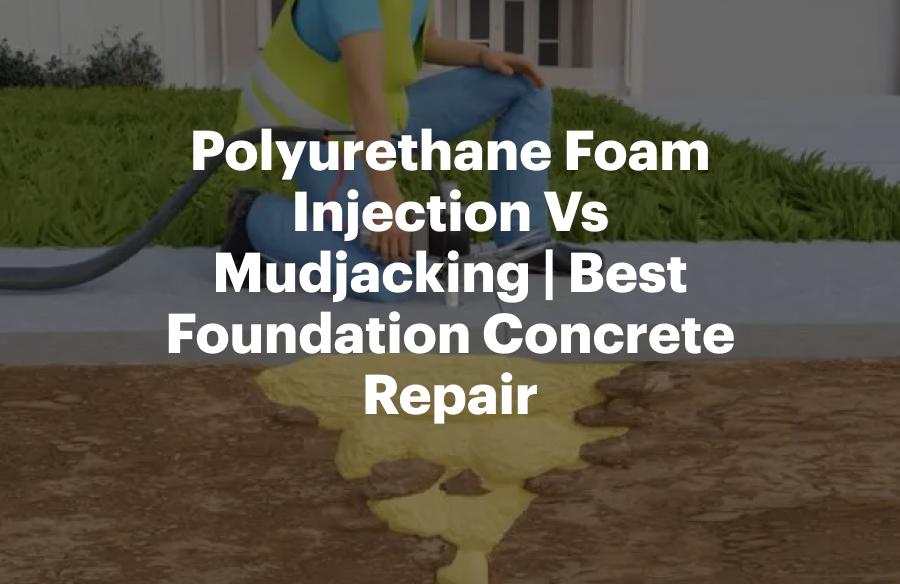If your driveway, sidewalk, or patio has started to sink or settle, you’ve probably come across two repair options, mudjacking and polyurethane foam injection. Both methods achieve the same goal, lift sunken concrete back to a safe, even level, but they go about it in different ways.
At Maestro’s Foundation Repair, we offer polyurethane foam injection services because its the most cost effective and quickest way to level your concrete. In this blog, we’ll break down the difference between these two techniques, what situations they’re best for, and how to choose the right one for your Fort Worth property.
What Is Mudjacking?
Mudjacking (also called slab jacking) has been around for decades. It involves drilling small holes in the concrete and pumping in a slurry made of cement, sand, water, and sometimes soil. That mixture fills the empty space under the slab and lifts it back to level.
How It Works
Small holes are drilled in a concrete slab, then a thick, muddy mixture is pumped beneath the slab. After the slab reaches its desired position, the holes are patched. One to two days is needed for the concrete mixture to cure.
Pros:
- Cost-effective for larger jobs
- Good for heavier concrete, like driveways or garage floors
- Years of a proven method
Cons:
- Heavier material can put more pressure on unstable soil
- Larger drill holes (about 1–2 inches wide)
- Longer drying time
What Is Polyurethane Foam Injection?
This is the modern, high-tech version of slab lifting. Instead of a heavy slurry, polyurethane foam injection uses a lightweight, expanding foam that’s injected underneath the slab. As the foam expands, it lifts the concrete and fills any gaps or voids in the soil.
How It Works
Tiny holes (about the size of a penny) are drilled in the slab. Then, expansive foam is injected under the slab. Similar to mudjacking the foam lifts the slab and sets within minutes. Holes are patched, and the area is usually ready for use the same day.
Pros:
- Lightweight, so it won’t add stress to weak soil
- Fast curing, usually within 15 minutes
- Less mess and smaller holes
- Ideal for precision lifting and sensitive areas
Cons:
- Slightly more expensive than mudjacking
- Not ideal for extremely heavy concrete in some cases
Which One’s Better?
That depends on your situation.
- Mudjacking is a great choice if you have large slabs or need a budget-friendly fix for things like driveways or patios.
- Foam injection is ideal if you need a quicker, cleaner solution, especially around pool decks, walkways, or anywhere you would not want to notice work had been done around your home.
Here in Fort Worth, where clay soil can shift dramatically with moisture changes, both options can be effective. This is as long as they’re done by experienced professionals who understand the ground they’re working with.
Still Not Sure? Let’s Take a Look.
At Maestro’s Foundation Repair, we don’t believe in one-size-fits-all fixes. That’s why we offer free inspections to help homeowners figure out exactly what’s going on beneath their slabs and which repair method makes the most sense.
We’ll explain the pros and cons, walk you through the process, and give you a precise quote. There is no pressure or surprises.
Book Your Free Concrete Lifting Inspection in Fort Worth
We’ve got you covered, whether it’s foam, mud, or something in between. Get in touch with Maestro’s Foundation Repair and let us help you level things out. We have years of experience dealing with the soil that plagues Dallas and Fort Worth Residents. We are fast, clean, and know the best menthod the first time. Contact us today!
